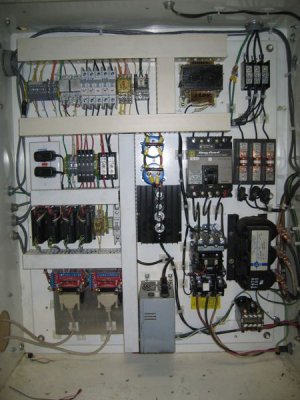- Joined
- Dec 3, 2013
- Messages
- 1,844
Okay I found it. Turned out to be the 24vac connection at terminal 30 on the transformer not being seated correctly. You cant see the terminal pocket without a mirror so it wasn't getting clamped even though it felt tight. Everything now works as it should.
Thanks for everyones help. In a way i'm glad this happened as I now have a better understanding of how the motor control and switching works and how to troubleshoot.
Thanks again.
Jay
Thanks for everyones help. In a way i'm glad this happened as I now have a better understanding of how the motor control and switching works and how to troubleshoot.
Thanks again.
Jay


